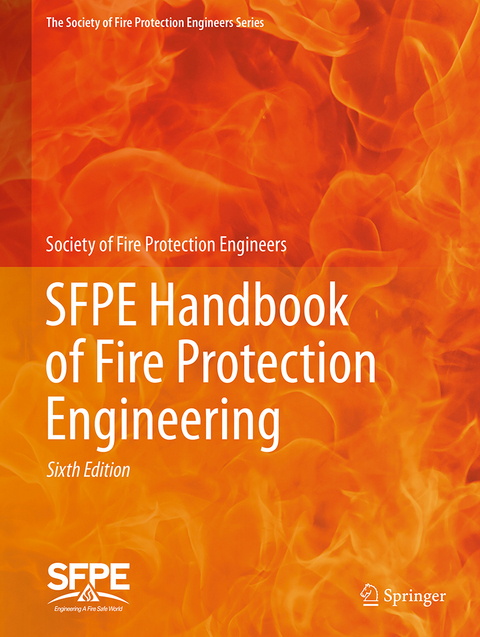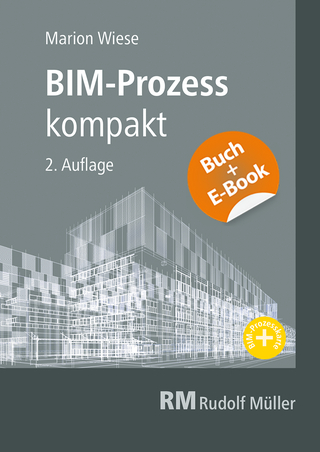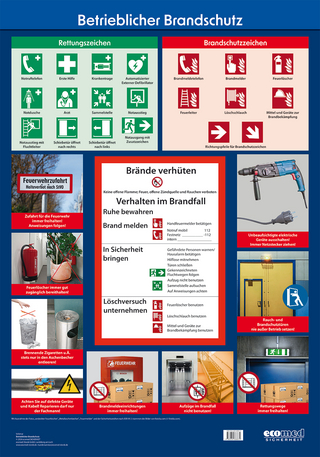
SFPE Handbook of Fire Protection Engineering
Springer International Publishing
978-3-031-59211-9 (ISBN)
- Noch nicht erschienen - erscheint am 02.06.2025
- Versandkostenfrei innerhalb Deutschlands
- Auch auf Rechnung
- Verfügbarkeit in der Filiale vor Ort prüfen
- Artikel merken
This definitive reference on fire protection engineering, revised and significantly expanded for the Sixth Edition, features both new and substantially updated information. The book provides unparalleled treatment of the current best practices in fire protection engineering and performance-based fire safety. Over 200 eminent fire engineers and researchers contributed chapters to the book, representing universities and professional organizations around the world. It remains the indispensable source for reliable coverage of fire safety engineering fundamentals, fire dynamics, hazard calculations, fire risk analysis, modelling and more.
The Society of Fire Protection Engineers (SFPE) is the professional society representing those practicing the field of fire protection engineering. The Society has over 4,600 members and 92 chapters, including 17 student chapters worldwide.
The purpose of SFPE is to advance the science and practice of fire protection engineering and its allied fields, to maintain a high ethical standard among its members and to foster fire protection engineering education.
Introduction to Fluid Mechanics.- Conduction of Heat in Solids.- Convection Heat Transfer.- Radiation Heat Transfer.- Thermochemistry.- Chemical Equilibrium.- Thermal Decomposition of Polymeric Materials.- Structural Mechanics.- Properties of Building Materials.- Chemical Kinetics and Fire.- Diffusion Flames.- Fundamentals of Premixed Flames.- Fire Plumes, Flame Height, and Air Entrainment.- Ceiling Jet Flows.- Vent Flows.- Effect of Combustion Conditions on Species Production.- Flammability Limits of Premixed and Diffusion Flames.- Ignition of Liquids.- Smoldering Combustion.- Spontaneous Combustion and Self-Heating.- Flaming Ignition of Solid Fuels.- Electrical Fires.- Surface Flame Spread.- Smoke Characterization and Damage Potential.- Heat Fluxes from Fires to Surfaces.- Heat Release Rates.- Calorimetry.- The Cone Calorimeter.- Compartment Fire Modeling.- Estimating Temperatures in Compartment Fires.- Zone Computer Fire Models for Enclosures.- Modeling Fires Using Computational Fluid Dynamics (CFD).- Enclosure Smoke Filling and Fire-Generated Environmental Conditions.- Methods for Predicting Temperatures in Fire Exposed Structures.- Fire Load Density.- Combustion Characteristics of Materials and Generation of Fire Products.- Performance-Based Design.- Fire Scenarios.- Engineering Considerations for Fire Protection System Selection.- Design of Detection Systems.- Hydraulics.- Automatic Sprinkler System Calculations.- Halon Design Calculations.- Clean Agent Total Flooding Fire Extinguishing Systems.- Carbon Dioxide Systems.- Water Mist Fire Suppression Systems.- Foam Agents and AFFF System Design Considerations.- Foam System Calculations- Considerations for Coordinating and Interfacing Fire Protection and Life Safety Systems.- Smoke Control.- Smoke Management by Mechanical Exhaust or Natural Venting.- Structural Fire Engineering of Building Assemblies and Frames.- Analytical Methods for Determining Fire Resistance of Steel Members.- Analytical Methods for Determining Fire Resistance of Concrete Members.- Analytical Methods for Determining Fire Resistance of Timber Members.- Egress Concepts and Design Approaches.- Selecting Scenarios for Deterministic Fire Safety Engineering Analysis - Life Safety for Occupants.- Human Behavior in Fire.- Employing the Hydraulic Model in Assessing Emergency Movement.- Computer Evacuation Models for Buildings.- Visibility and Human Behavior in Fire Smoke.- Combustion Toxicity.- Assessment of Hazards to Occupants from Smoke, Toxic Gases, and Heat.- Engineering Data.- Liquid Fuel Fires.- Fire Hazard Calculations for Large, Open Hydrocarbon Fires.- Vapor Clouds.- Effects of Thermal Radiation to People Predicting 1st and 2nd Degree Skin Burns.- Flammable Gas and Vapor Explosions.- Dust Explosions.- BLEVEs and Fireballs.- Introduction to Fire Risk Analysis.- Probability & Statistics.- Reliability, Availability, and Maintainability.- Building Fire Risk Analysis.- Uncertainty.- Decision Analysis.- Data For Engineering Analysis.- Measuring Fire Consequences in Economic Terms.- Computer Simulation for Fire Risk Analysis.- Engineering Economics.- Fire Risk Indexing.- Risk-Informed Industrial Fire Protection Engineering.- Product Fire Risk Analysis.- Health Care Application of Quantitative Fire Risk Analysis.- The Building Envelope - Fire Spread, Construction Features and Loss Examples.- Wildland fires.- Fires in Vehicle Tunnels.- Fire Risk Assessment for Nuclear Power Plants.- Fire Risk in Mass Transportation.- Appendix A: Conversion Factors.- Appendix B: Thermophysical Property Data.- Appendix C: Fuel Properties and Combustion Data.- Appendix D: Configuration Factors.- Appendix E: Piping Properties.
| Erscheint lt. Verlag | 2.6.2025 |
|---|---|
| Reihe/Serie | The Society of Fire Protection Engineers Series |
| Zusatzinfo | X, 4510 p. 2184 illus., 628 illus. in color. In 5 volumes, not available separately. |
| Verlagsort | Cham |
| Sprache | englisch |
| Maße | 210 x 279 mm |
| Themenwelt | Technik ► Bauwesen |
| Technik ► Maschinenbau | |
| Schlagworte | Best Practices • Configuration factors • Conversion factors • Fire alarms • Fire dynamics • Fire load density • Fire protection engineering • Fire risk analysis • Fuel properties and combustion data • Hazard calculation • human behavior in fire • Modeling • Performance-based fire safety • Piping properties • sprinklers • System selection and design • Thermophysical property data • Vehicular tunnels • Wildland Fires |
| ISBN-10 | 3-031-59211-5 / 3031592115 |
| ISBN-13 | 978-3-031-59211-9 / 9783031592119 |
| Zustand | Neuware |
| Haben Sie eine Frage zum Produkt? |
aus dem Bereich


